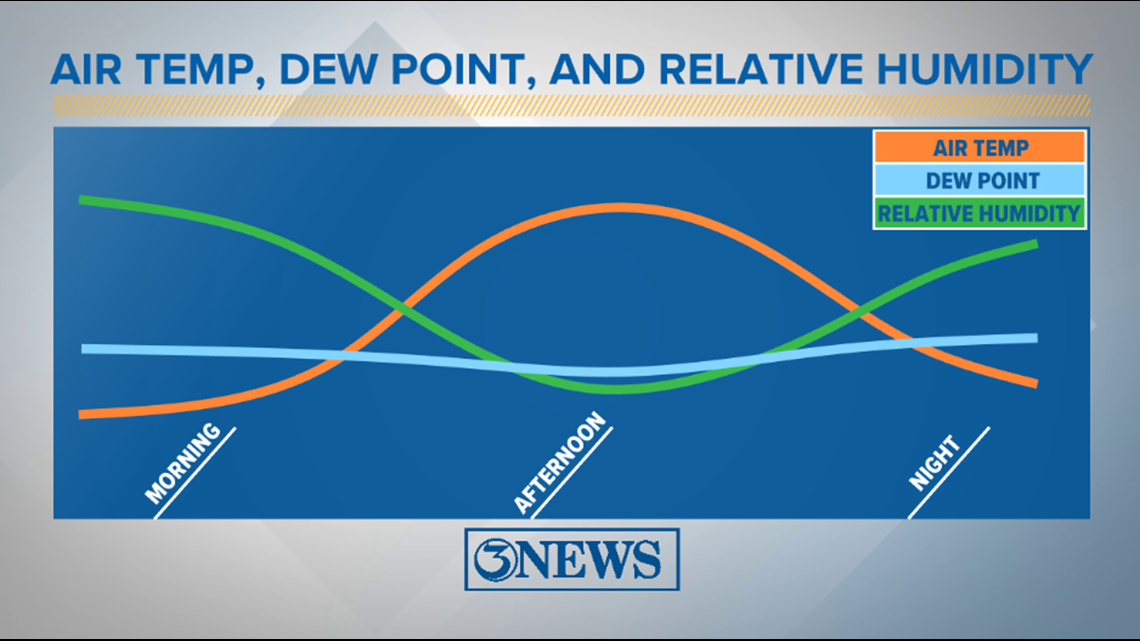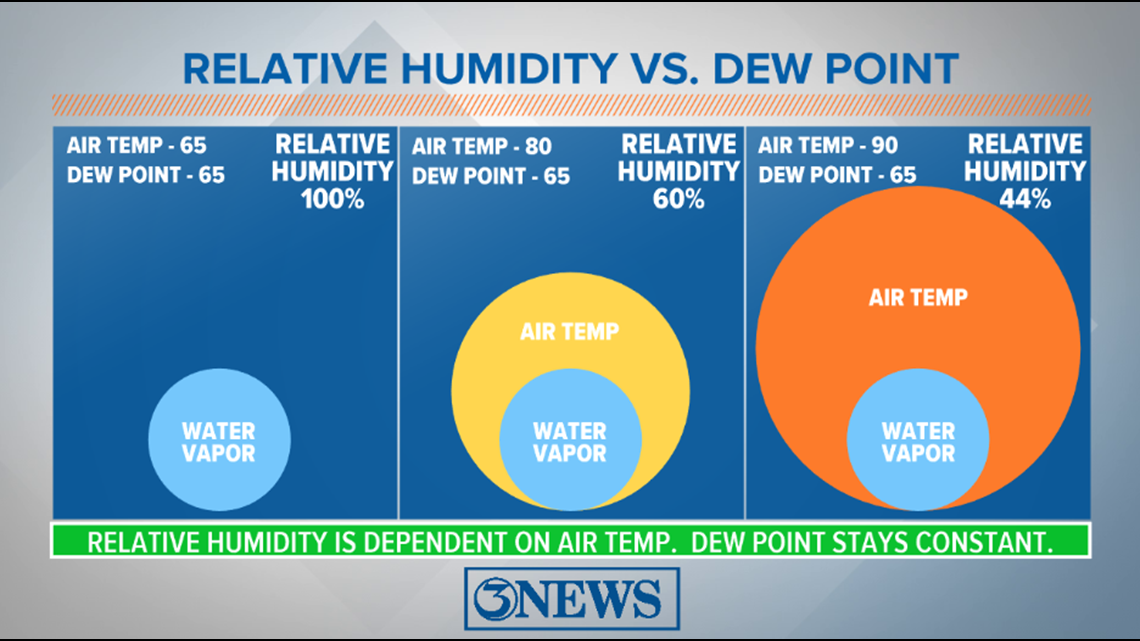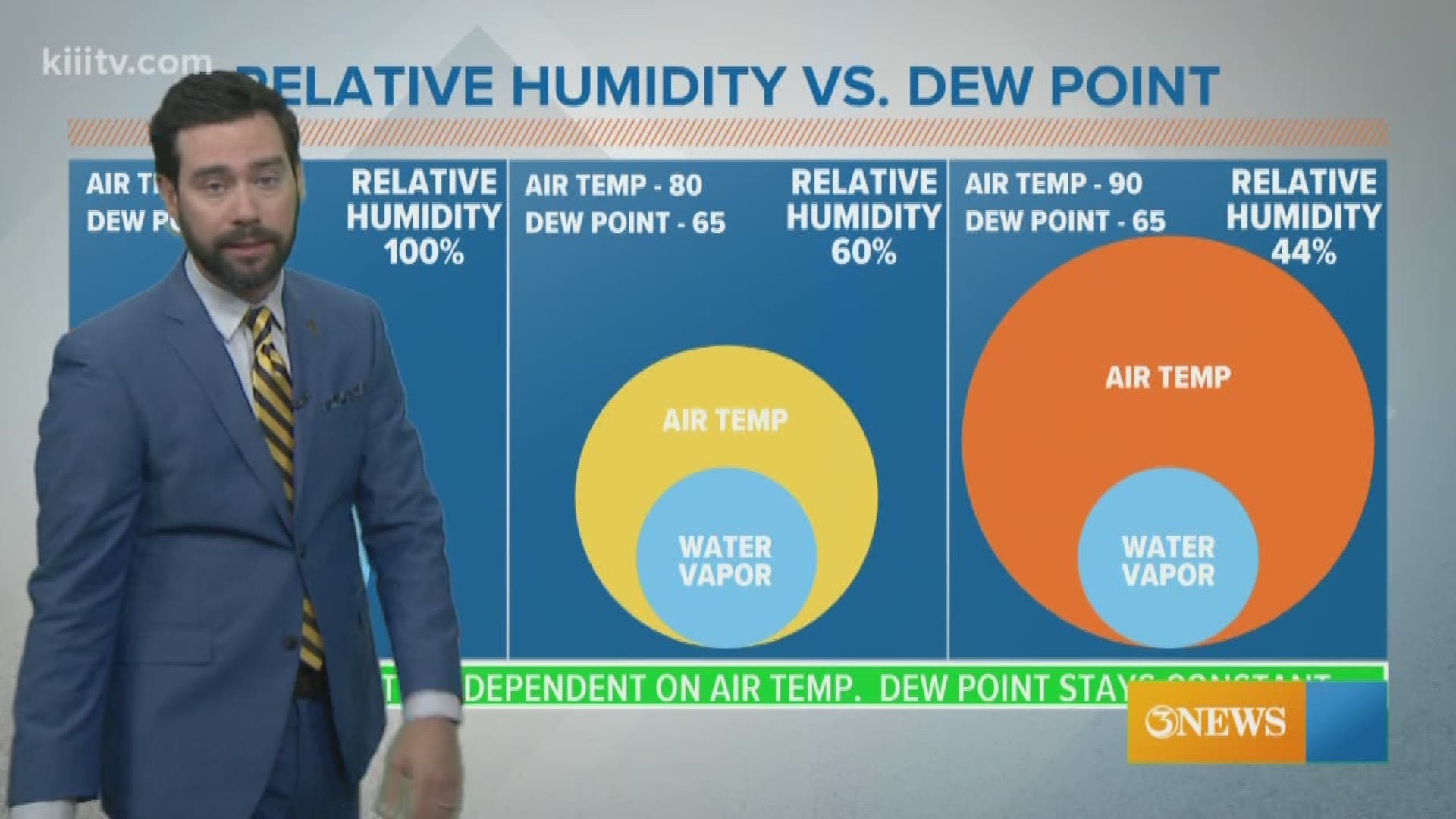CORPUS CHRISTI, Texas — You see it all the time. The humidity is 100%! So humid! Air you can wear! While that may be true *at times*, it doesn't paint the full picture. When humidity is expressed as a percentage, it is relative humidity being shown. Often, it gets close to, if not at 100% in the morning in Corpus Christi. Let's unpack...
Relative humidity is a ratio that compares the amount of water vapor in the air compared to the total amount of water vapor that can be present in the air at a given temperature. Because temperature is a part of this equation, relative humidity, is dependent on the air temperature. Air temperature doesn't stay the same throughout the day (typically), right? as it warms up, the relative humidity goes down and as it cools off, the relative humidity goes up. An inverse relationship.


Dew point is simply the temperature at which air will condense. This value remains fairly constant throughout the day and doesn't change much with the temperature. You can see how the three interact on a given day in the image above. It is for this reason, that I feel the dew point is a better indicator of how the air feels outside. For example...


On a morning where temperatures are in the middle 60s and the dew point is at a similar number, the relative humidity is at or very close to 100%. Humid? Yes; however, as the temperature warms to say, 80°, the relative humidity will drop down while the dew point will remain constant. A drop from 100% down to 60% seems big, but in actuality the humidity level really hasn't changed that much, assuming dew point has remained constant. This is why the muggy meter is based on dew point. It's a better indicator of the true amount of moisture in the atmosphere with the bonus that it doesn't change drastically throughout the day like its relative (pun) counterpart.


An example of a misleading relative humidity value is easy to find on cold mornings. Let's say the air temperature is 40° with a dew point to match. The relative humidity would register 100& even though the air isn't humid feeling.
Relative humidity, in my opinion, is best served when determining fire weather danger. When relative humidity gets low, like under 20%, it can lead to higher fire weather danger. Especially on hot days when dry vegetation is present.
Stick with dew point when discussing how humid it is outside.
- Holt, out

